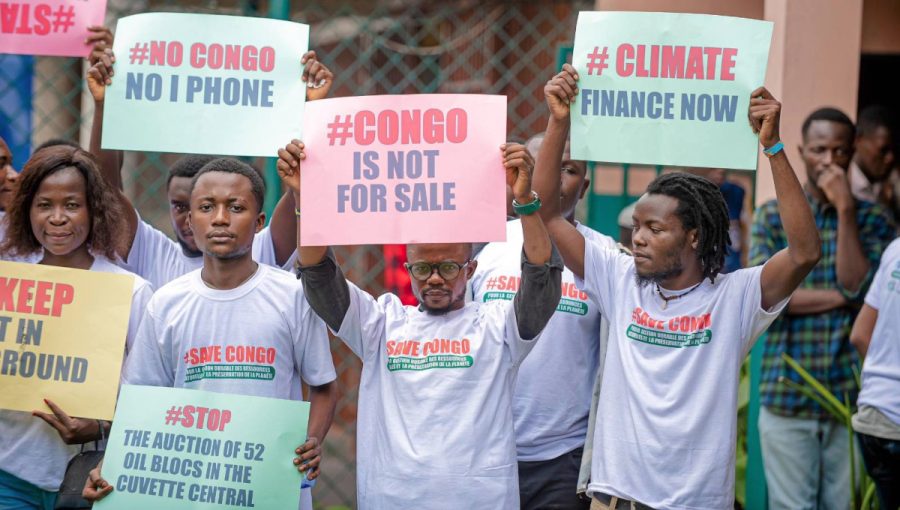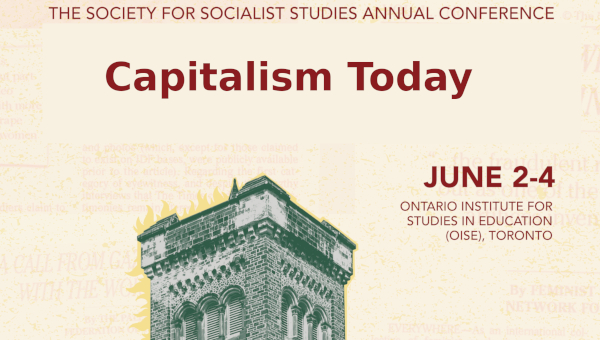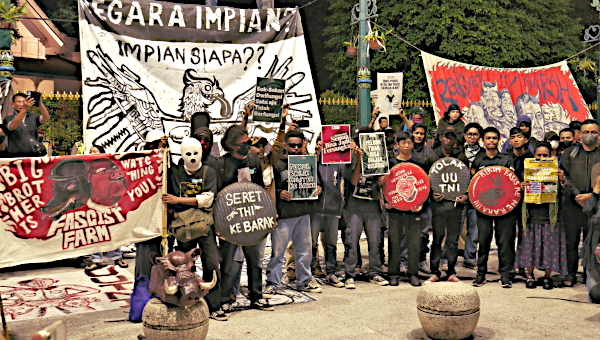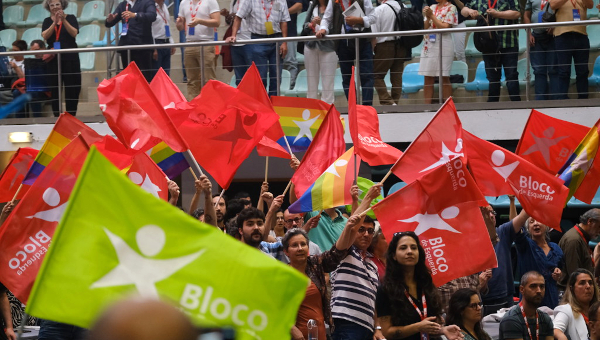The Need for Consistent Politics In the Wake of 22 Bahman
February 11, or 22 Bahman, marks the 31st anniversary of the 1979 Iranian Revolution. On this day, massive street fights between government troops loyal to the Pahlavi dynasty and Iranians opposing its repressive rule culminated in a final collapse of the last monarchy of Iran. With the Military Council’s declaration of “neutrality” of the armed forces began massive street celebrations by the Iranian revolutionaries, along with a series of takeovers of government offices, military buildings, prisons, television and radio stations, and of the exclusive estates and palaces of the Pahlavi family, to convey the triumph of the people in overthrowing a foreign-imposed monarch.
In the minds of the students and participants of the 1979 Revolution, 22 Bahman evokes bittersweet memories of a decades-long Iranian struggle against political tyranny, social repression, state violence, and foreign-imposed agendas. This day was significant to the Iranian people before an Islamic Republic was officially declared, before the concept of velayat-e faqih (a system of rule where a single religious representative provides political guardianship over the people in the form of a jurist-theologian or divine legislator) was adopted and inserted in the new constitution, and before the range of rival political factions in Iran who together fuelled the revolution were crushed by the ruling establishment.
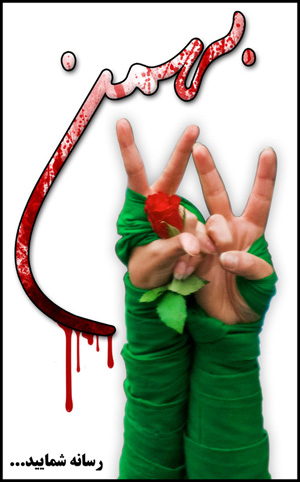
This year’s 22 Bahman is of particular significance. In the context of the fraudulent election results of June 2009 which have now become a social fact, followed by a series of violent clampdowns by the security forces of the state, speaking on behalf of the principles, struggles and sacrifices of 22 Bahman translates into a declaration of legitimate rule, and paints a political face encompassing the values of social justice, civic freedom, economic autonomy, political expression, speech and participation. As a result, all sides are planning demonstrations to commemorate this day. The state is planning its usual gatherings and government-sponsored rallies to showcase its strength and reinforce its authority, certainly to Western and regional powers but primarily to its demoralized, alienated and frustrated population. At the same time, demonstrations and direct actions were planned in Iran’s major cities by the broad-based national opposition, commonly referred to as the ‘Green Movement.’
Subverting the Symbols and Spaces of the Regime
On key occasions since the June elections the national opposition has taken to the streets to demonstrate its dissent to the regime and refusal to accept the fradulent election results. Since June, Iranian protesters have reclaimed and reinterpreted all the occasions the Islamic Republic holds sacred to illuminate its hypocricy: a government positing itself as a speaker against imperialism, oppression and exploitation has become the biggest violator of the rights, the fundamental rights, of its own people.
September 18 marks the commemoration al-Quds Day. Held on the last Friday of Ramadan, this is a day where solidarity with the struggle of the Palestinian people against Zionism and the Israeli occupation and continued colonization of Jerusalem is expressed. Claiming to support the resistance against historical injustice, exploitation and oppression, government-sponsored al-Quds Day rallies were faced with millions of Iranians on the streets, carrying banners with the phrase “Quds day, Green day.” Given the state’s interpretation of anti-government rallies as “illegal gatherings,” the protesters were faced with a heavy presence of armed government-sponsored militias, known as Basij, who attacked and shot at the crowds, arresting over 35 individuals (many of whom are denied access to legal aid, family members, and the media).
This period also marked the start of the school year, where regular gatherings were formed outside of the official state occasions on university campuses with students chanting anti-government slogans, booing visiting government officials at their universities, and resisting government and administrative orders to cease their public protest. Defying threats of imprisonment, students at Shahrouz University, Azad University in Tehran, Khajeh Nasir University, Ahvaz Chamran University, Eilam University, Isfahan Industrial University, Noushiravan Babol Industrial University and others regularly gathered to voice their condemnation of the fraudulent elections.
November 4 (13 Aban) is the anniversary of the U.S. Embassy occupation. On this day in 1979, Iranian students stormed the embassy seizing U.S. diplomats and holding them hostage for 444 days, after which Ayatollah Khomeini managed to effectively solidify his rule over rival factions. Under the legal guise of this occasion – and despite the regime’s launch of a campaign of fear and intimidation perpetuating violence and discord targeting students and activists on the streets, in the universities, and in their homes – the opposition demonstrations continued, twisting the official anti-U.S. slogans to “death to Russia” for it’s recognition of Ahmadinejad’s presidency. As before, intense confrontations with armed and under-cover government vigilantes, and riot police wielding batons on motorcycles ensued on the streets of Tehran, and other major Iranian cities, and many protesters were violently attacked, beaten, and arrested.
December 7 (16 Azar) is known as ‘Students Day’ in Iran, an anniversary of the murder of three University of Tehran students in 1953 by the police during the time of the Pahlavi rule. This day is commemorated with local demonstrations representing a day of solidarity with the Iranian student movement against tyranny, oppression, and censorship. In anticipation of major anti-government protests, the state increased security on and around most major campuses, and arrested dozens of students and senior members of student groups leading up to the important day. Despite these measures, on 16 Azar, anti-government protests ensued on more than 50 university campuses in Iran, with students joined by ordinary Iranians who in addition to commemorating the students killed during the Pahlavi regime, highlighted the brutality of the crimes committed by the Islamic Republic. Foreign journalists were banned from reporting on the protests, but reports quickly came in from Iranians on the street that on most campuses, government forces sought to keep the students within the university premises so as to prevent them from joining other protesters outside the university, and used teargas, batons and rubber bullets to disperse the gathering crowds.
December 29 marked the commemoration of Ashura, a day or mourning for the martyrdom of Imam Hussein, killed in the Battle of Karbala against Yazid. A particularly important figure in Shi’a Islam, Imam Hussein is a symbol of the struggle against oppression, injustice, and tyranny, and in many ways represents the key values the Islamic Republic claims it embodies. Demonstrations started around December 27 with thousands of opposition supporters in various cities including Isfahan, Najafabad, Shiraz, Mashhad, Arak, Tabriz, Babol, Ardabil and Orumieh and, with numerous reports of fatal shootings and beatings of protesters with batons and whips by Basij forces, they continued into the day of Ashura. Footage taken from Iranians on the street also shows numerous cases where Basij drive over protesters with trucks. On a day about justice, an occasion on which violent actions are forbidden, the protesters subversively flipped the symbolism of the Islamic Republic, rendering the establishment, and in particular Ayatollah Khamenei, as a modern Yazid. The protests continued until December 30 throughout which mass arrests, imprisonment and trials of hundreds of protesters ensued along with extensive crackdowns on, and raids of the offices of key dissident figures.
Creative Resistance, Sophisticated Tactics
In addition to laboriously planned street actions advertised weeks in advance through online tools and on the street by word-of-mouth, messages on building walls and leaflets, the broad-based opposition movement has continued to subvert the Islamic Republic’s ideological, political, and religious symbols and occasions through a range of sophisticated and creative means.
Coordinated plug-ins of household appliances like lamps, irons, heaters and toasters by thousands shut down street lights in Tehran suburbs to assert the presence of the opposition. Messages, poems and limericks questioning the legitimacy of the Iranian government, condemning violence against protestors and expressing solidarity with political prisoners, among others, are written on bank notes and circulated through public use. Anti-government chants and statements are also written on structures such as the side of buildings, statues, public art, washroom doors and walls – most significantly in university campuses. Iranians have also spent countless nights shouting “Allah akbar” on their rooftops to confront government accusations that their broad-based movement is somehow foreign-engineered and against Islam.
While the future direction and capacities of this movement remain unclear, what is clear from the anti-government protests which occurred during these post-election months (many other initiatives were not mentioned in this article), is that the broad-based national movement in Iran is no longer merely about fraudulent election results. Rather, they are about months of intense, unrestrained and multifaceted violence the population has endured at the hands of the government of the Islamic Republic. Protesters are no longer afraid of chanting or holding signs with messages of “death to the dictator” or “death to Khamenei” – rhetoric which was inconceivable to be uttered by such masses and to this extent only a few years ago. Even pictures of Ayatollah Khamenei have been burned by protesters inside university halls and on the side of buildings. Further, Iranian protesters are beginning to locate the problem of the regime in the security establishment and, in the case of the Ashura protests which saw an escalation in violence, confront symbols of state oppression and violence.
No Freedom After Expression
Anticipating large turnouts of opposition supporters on the anniversary of the Iranian Revolution, the state has resorted to a range of preemptive measures aimed at suppressing the protests: disrupting the internet service, shutting down text-messaging in the whole country, replacing plastic garbage dumpsters with metal ones so as to prevent them from being set on fire and used as shields by protesters, setting up loudspeakers on major demonstration paths so as to drown out the opposition chants, and installing numerous advanced closed-circuit security cameras on the major roads of Azadi Avenue and Enghelab Avenue. This followed a long post-election campaign across Iran of mass arrests, executions, simulated mass trials, forced confessions after extensive torture, rape of both male and female protesters in prison, raiding of houses, abductions, violent attacks on the streets, and detentions in prisons and solitary confinement without charge by the security forces, all of which is aimed at dissolving the opposition and suppressing criticism. That the range of targeted and imprisoned individuals includes journalists, photographers, poets, artists, advocates of women’s and children’s rights, students, opposition activists, protesters caught throwing rocks, bloggers, and others shows that they are, as stated by Hadi Ghaemi of The International Campaign for Human Rights in Iran, viewed as a threat by the state not because of “any specific acts they have committed but for the ideas and ways of thinking they represent.”
Increased harassment from the state’s security apparatus has also come in the form of warning issued to opposition protesters of severe confrontations at any anti-government gathering held in conjunction with official rallies, along with threats by the Commander of the Revolutionary Guard, Hossein Hamedani, that the Islamic Republic “will not allow the Green Wave show itself.” Such statements were also directed at high-level opposition figures by the Supreme Leader Ali Khamenei himself, who condemned the “ambiguous positions” of those “who question the election results” and declared he would wait until 22 Bahman for these persons to clarify their position on the claims of the opposition.
Yet, despite state attempts to invoke fear into the minds of Iranian critics and dissenters, opposition blogs and websites indicate that anti-government gatherings were planned for 22 Bahman and the diverse masses of protesters gathering on key occasions since the fraudulent June elections were once again expected to appear.
Exposing False Dichotomies
The broad-based opposition movement in Iran is changing the political language of the region. Indeed, by amending the definition of resistance and dissent it has adopted, the movement has allowed for more forms of action creating ruptures within the Iranian establishment. The false dichotomies of secular versus Islamic, and/or imperialist versus anti-imperialist which at one point may have applied to Iranian political discourse, are not applicable to the current national opposition movement in Iran.
The protesters have indicated through their appropriation of religious symbols such as the adoption of the colour green often associated with Islam inside Iran, the chanting of “Allah akbar” and those of “Ya Hossein, Mir Hossein,” attendance at Friday prayers and uses of this space for demonstrations, among others, that their struggle is not against Islam. Even a look at the positions and rhetoric of higher-level politicians, clerics and religious intellectuals with intimate roots in the Islamic Republic on the opposition movement and the post-election actions of the government, such as Dr. Mohsen Kadivar and Ayatollah Yousef Sanei among others, indicates that the picture is more complicated.
Nor can the movement be limited to the familiar dichotomies of imperialist versus anti-imperialist. Of course, being a significant political power and considered an opposition to Israeli and American regional machinations places imperialism on the table. But while geo-politics makes imperialism an issue of concern, it is certainly not ‘the’ issue when it comes to the opposition movement itself. Western states are primarily interested in reaching a deal on the nuclear issue and securing the continued territorial and military expansion of the Zionist State. This is the main aim, even if the issue of human rights is placed on the back-burner. Indeed, this is easily attested to by students of the Palestinian struggle for self-determination, standing with extensive volumes of international legal resolutions and human rights reports carefully outlining Israel’s obligations as an occupying force and extensively documenting continued Israeli humanitarian violations, only to be faced with a silent (and complicit) international community. Rather, it is in the context of failed talks on the nuclear issue that countries like the United States redirect their efforts toward a merging of the nuclear program and treatment of opposition members, so as to allow for a role in the internal Iranian political scene. In such a context, declarations of support by the Obama administration and Zionist claims of solidarity with Iranian protesters are absurd, and do not fuel the internal Iranian opposition. Iranians are on the streets because they want social and political freedoms for themselves, not because Western governments want this for them.
Need for Consistent and Sober Politics by Solidarity Activists
The familiar political and ideological categories of distinction are inapplicable to the present opposition movement. The change of the political language has contributed to the failure of many leftists, anti-racist activists, and people of conscience to stand in solidarity with the Iranian people, as the existing political dynamics in Iran require a more thorough and sophisticated position. For instance, adopting an anti-imperialist position limited to condemning foreign military and economic interference in the internal matters of Iran is no longer sufficient. Such a position quickly becomes apologetic of the ongoing criminal history of the Iranian government if it fails to genuinely and extensively incorporate the current political violence and immense social restraints endured by the Iranian people. Rather, careful attention to the abysmal human rights record of the Islamic Republic must accompany even the slightest consideration of its claims as a speaker on behalf of the rights of other oppressed and occupied peoples. Considering the Islamic Republic a legitimate authority on the just rights of Palestinians, is like praising the Israeli Defence Forces for building a makeshift hospital in Haiti after the devastating earthquake. Both positions fail to highlight the criminal record and moral bankruptcy of the two parties.
At the same time, support of anti-government protesters from a position that reinforces or is sympathetic to neo-conservative and Zionist regional political interests is similarly inadequate in that it feeds into an interventionist discourse and appropriates the values of a broad-based movement against oppression, tyranny and exploitation against the direct interests and welfare of its participants. Both are an insult to the integrity of the Iranian people, their struggles and sacrifices.
Going Forward: Where to Go
for Up-To-Date News from the Iranian Streets
Recently, and particularly since increased social repressions after the June 2009 elections, Iranians and non-Iranians alike have invested much effort in devising ways to gather, translate and provide up-to-date information in English on events inside Iran. The following website astreetjournalist.com and blog reroad.blogspot.com are recommended to solidarity activists by this author for up-to-date information, testimonies and news from Iran.
Access to such information provides part of the necessary ingredients for solidarity activists to adopt a position on the broad-based opposition movement forming in Iran that moves beyond the inapplicable aforementioned dichotomies, and takes into account the social, political, cultural and economic realities faced by ordinary Iranians on a daily basis. •


